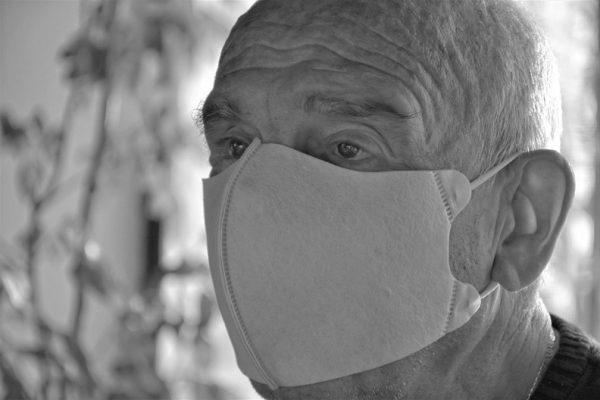2023 Year Of Millets – Healthy Millets, Healthy Life

Author: HealthyLife | Posted on: January 27, 2023


The Food and Drug Administration recently approved a fecal-based therapy to prevent recurrent Clostridioides difficile infection. Rebyota is a drug that is approved for the prevention of recurring C. dificile infection also known as CDI in individuals of 18 year old and above.
What is Clostridioides difficile?
C. diff is a bacterium that infects and causes inflammation of the colon that leads to nausea, stomach pain, fever, diarrhea, and loss of appetite. Each year in US alone about half a million infection that occur because of C. dificile and one patient out of six will have recurring CDI within next eight weeks of initial infection.
Generally human intestinal tract harbors gut flora or gut microbiome. In a healthy person, these microbes are well behaved and are balanced. Sometimes, due to disturbance in the gut environment like disturbance after taking antibiotics to treat certain infection will lead to imbalance in the gut flora. This will lead to multiply of certain harmful bacteria such as C. dificile. Once multiplied in excess, they release toxins causing diarrhea, abdominal pain and fever, and in some cases, organ failure and death. A weakened immune system after surgery, hospitalization due to sickness, a person aged above 65 years with weak immune system can also get infected and suffer from CDI. These patients might get infected multiple times. Treatment options for the risk that happens in recurring CDI is limited. To restore the gut flora and to prevent further CDI administrating fecal microbiota in the patients was thought to be a solution (Healthy Life)
Rebyota drug is prepared by the fecal (stool) of qualified patients (FDA)
Rebyota—is the first FDA-approved microbiome therapeutic
Rebyota is administered rectally as a single dose. Rebyota is prepared from stool donated by qualified individuals. The donors and the donated stool are tested for a panel of transmissible pathogens, however, as Rebyota is manufactured from human fecal matter, it may carry a risk of transmitting infectious agents. In addition, Rebyota may contain food allergens; the potential for the product to cause adverse reactions due to food allergens is unknown.
The safety of Rebyota was assessed from two randomized, double-blind, placebo-controlled clinical studies and from open-label clinical studies conducted in the United States and in Canada. The participants had a history of one or more recurrences of CDI. They received one or more doses of Rebyota or placebo 24 to 72 hours after completion of antibiotic treatment for their CDI; participants’ CDI was under control at the time of receipt of Rebyota or placebo. Across these studies, 978 individuals aged 18 years and older received at least one dose of Rebyota. In one study, among 180 Rebyota recipients, when compared to 87 placebo recipients, the most common side effects after receiving one dose of Rebyota were abdominal pain, diarrhea, abdominal bloating, gas, and nausea.
The effectiveness of Rebyota was evaluated in an analysis of data from a randomized, double-blind, placebo-controlled, multicenter study. The analysis included 177 adults who received one dose of Rebyota and 85 who received one dose of placebo in this study. It also incorporated success rates from a different placebo-controlled study in which 39 adults received one dose of Rebyota and one dose of placebo and 43 adults received two doses of placebo. Success in preventing recurrent CDI was defined as the absence of CDI diarrhea within 8 weeks of administration of Rebyota or placebo. In a statistical analysis that considered both studies, the overall estimated rate of success in preventing recurrent CDI through 8 weeks was significantly higher in the Rebyota group (70.6%) than in the placebo group (57.5%).
The application was granted Fast Track, Breakthrough Therapy and Orphan designations.
The FDA granted approval of Rebyota to Ferring Pharmaceuticals Inc.
For further read please visit:
Image credit: Image by Darko Djurin from Pixabay (cc by 0) & Image by Phoenix Locklear from Pixabay (cc by 0)

Taking care of your skin has no other exception. We live in a busy world where we constantly try to deal with our work-life balance. In such situations, we might not get enough time to care for our health. Well, if you do not get enough time, you have to take other measures because once damaged, it becomes hard to recover your skin to its previous place. Your skin can experience various negative impacts due to the sun, rough weather, or lack of care. For instance, acne and dark circles are common skin issues that we see in many people.
So, what’s the solution? The only potential solution is to go for all-out skin treatment in advance. It’s not about going to the doctor, but you can DIY. What you need to do is to follow an appropriate skincare routine. A proper and experienced skincare routine may help you to deal with any form of skin issues. This is not only about the acne that you face, but if you do not take care of your skin on time, it may experience other issues like wrinkles and even cancer.
Skin Care Products We Should Not Avoid
Skincare issues may differ with age. The product that you are using might not suit your sister or friends. Age is a big factor in change. However, following simple products is the most viable option for a senior. Well, we have found some common and safe skin care products that you must keep.
1. Cleanser
Most of us are familiar with cleansers.
No?
Well, what about a face wash? Can you relate to it now?
You can use a face wash or cleanser twice daily to eliminate various skin-related issues. If you are worried about your face, it’s the first step to getting rid of dirt, sebum, bacteria, and makeup.
2. Toner
Most of us skip this step as we need to learn more about the usage and benefits of toner. Well, it is as important as a moisturizer and cleanser. The basic purpose of a toner is to tone your skin. However, this is not the end. It also helps to exfoliate our skin cells and remove dead cells. A toner may also work properly to stop dirt, bacteria, and dust.
You can also go for the best skin care products in UAE to find out your suitable toner.
3. Serum
Different forms of serum help us in different ways, and it can easily be on your list to deal with various skin care issues. For instance, some serum works as a moisturizer, some provide exfoliators, and some help improves dry skin conditions. Well, oily-skinned people not require a skin serum, but those who have dry skin are prone to serum.
4. Moisturiser
A moisturizer helps us to hydrate our skin and make it worth enough to deal with acne. People who think that moisturizer is not for oily skin are an illusion as it is not directly related. The more you dig into the factors, you will understand that a moisturizer helps us fight dust, dirt, and bacteria.
5. Sunscreen
Many people consider sunscreen because their doctors told them to use it but using sunscreen is no longer a luxury; it is necessary if you are going out every day. Well, the dangerous UV rays of the sun may damage our skin permanently and may even lead to cancer.
But if you use sunscreen, you might get rid of these issues. This is where people get rid of dangerous skin-related problems occurring from the sun.
6. Eye Cream
Dark eye circles are also on your list? Well, don’t worry! We are here with never-ending solutions for you.
Using eye creams is a possible solution to get rid of dark eye circles. It also helps to keep our eye nerves cool and decent. So, you will be able to get good sleep and also avoid unnecessary wrinkles under the eyes.
7. Exfoliant
It is necessary to exfoliate our skin to keep our skin healthy and remove dead cells. So, last but not least, try to use some exfoliant as a solution to dehydrated skin.
Image credit: Image by Andrew Poynton from Pixabay (cc by 0)

In earlier days, it took a lot of work for anyone to maintain their health care documents in physical format and create heavy files. To address this concern, the Ministry of Health and Family Welfare (MOHFW), Government of India, developed a solution where one can keep their health care document related to their current and historic health care records in an e-wallet like Digi locker. A patient can access these electronic health records, which are safely stored in this e-wallet, anytime and anywhere. This e-wallet is known as Ayushman Bharat Health Account (ABHA).
There is an ABHA number associated with the ABHA ID that helps in signing up for the ABHA address. This account helps an individual to keep their medical records organised seamlessly. Thus, the Personal health record of every citizen, like prescriptions, diagnoses, test reports, etc. can be easily uploaded into the ABHA e-wallet. If one wants to share this data, it is advised to create an ABDM ABHA address and, thereafter, link with your ABHA number for an effortless process.
Carrying physical medical reports anywhere and everywhere when you visit any health care center like a diagnostic centre, clinic, or hospital, is a task in itself. Not only will it lead to carrying heavy files, but it will make it a cumbersome task to keep track of the medical history of one individual. Due to such difficulty, there was a major gap between the patient and the doctor concerning the transfer of medical record information. Thus, it led to delays in receiving information from patients and, in a way slowdown in treatment at times.
Therefore, an ABHA digital health ID solves all these issues by storing all the medical information in one place. Once you have your ABHA ID number, all you have to do is share your unique ID number with the medical provider, like a doctor, lab technician, or insurer. With a few clicks, they can view all your medical information instantly. Thus, it is created with the aim to reduce critical care response time.
ABHA is a unique health ID that has a 14-digit identification number that can be easily generated using an Aadhar card, driving license, or mobile number. Anyone who is a citizen of India and has any of these documents is eligible to get an ABHA card to access health records digitally without any cost. All you need is a smartphone or computer with an internet connection.
You can get click-away access to all your medical records to input into your ABHA card, from treatment to discharge documents like tests, prescriptions, and diagnoses, in a paperless way.
You can get easy access to qualified and verified healthcare providers securely. It helps you get a doctor’s consultation too.
Access to your health records is given completely to you with prior clear and informed consent. You have the right to manage and revoke the consent whenever in need. Thus, all the medical information linked to your ABHA ID is not shared with anyone else but just you.
As the platform is built with robust security and encryption mechanisms, no information is shared with anyone else, thus, keeping every medical document handy, secured, and safe.
There is no compulsion to create an ABHA ID card. You can participate to create at your own will voluntarily with no external pressure. This gives enough room to every citizen of India to decide whether such an effective ABHA health card is useful to them or not.
The self-declared username or PHR address (Personal Health Records) is required to login into the Health Information Exchange and Consent Manager (HIE-CM). Each ABHA number holder will require linkage to a consent manager to enable data sharing. Thus, access and link your PHR with ABHA to create long-term health history.
The Government of India built this initiative for anyone and everyone who uses a smartphone, feature phone, or laptop having an internet connection. Thus, it is not restricted to one type of device.
The Ayushman Bharat Digital Health Account (Health ID) will create a seamless online process that will be a safe and secure platform to keep the person’s health records confidential. Also, with this initiative, the Government of India aims to reduce the risk of preventable medical errors and increase the quality of healthcare service in the country.
Image by Gerd Altmann from Pixabay (Source)

During onset of winter world is recording a greater number of people getting infected with RSV -Respiratory Syncytial Virus. This contagious viral infection can be seen in young children and adults above 60 years of age. RSV is not a new virus. But it may be more of a health concern now than before. As per the data from CDC, after Covid pandemic, there is an increase in number of hospitalizations of adults due to RSV infection. During pre-covid these numbers were 10 times lesser at this time of the year.
A person can get RSV infection multiple times in a lifetime. It is generally a mild virus but when severe it can affect lungs and respiratory airways. Currently RSV cases are more in pediatric divisions. According to Thomas Russo, M.D., professor and chief of infectious disease at the University at Buffalo in New York “There’s a huge disease burden in the pediatric population right now and there will obviously be spillover, including in seniors interacting with grandchildren”. As it is contagious, RSV is getting into seniors’ system whenever they are exposed to the virus.
Symptoms of RSV:
Initial symptoms of RSV are like that of flu. These symptoms are hard to separate RSV from other common illness. Symptoms can range from mild to severe and can last up to 2 weeks.
RSV symptoms may include:
In older adults RSV symptoms can be severe. If the immunity is already compromised by already existing underlying conditions, then having RSV can impose and increase problem of recovery in older adults. Such patients may need hospitalization and proper care. Conditions that increase chances of hospitalization in older adults who are at age of ≥65 are;
If a person with any of the above conditions develops RSV, it can lead to serious complications such as COPD, heart failure, pneumonia, more asthma attacks. Amongst these symptoms pneumonia infection is the main concerns as lungs fill up with pus or fluid leading to serious illness and hospitalization.
Generally, a person with RSV will remain contagious for about 10 days. Whereas, with preexisting and compromised immune systems a person can be contagious up to a month.
Precautions and prevention measures:
Treatment:
Unlike influenza or Covid-19, there is no specific treatment for RSV. There is no vaccine. There is no test kit or home test kit for RSV. Initially doctors may treat the person for multiple virus symptoms or painkillers and to reduce fever.
If a person needs hospitalization, then hospital give oxygen support for better breathing and IV fluids for energy.
When to see doctor?
Remember – there are no medications or vaccines for RSV. Symptoms can be reduced by taking proper precautions. Afterall, we all are good at it as we are familiar with non-pharmaceutical interventions practices that we used during COVID pandemic time. Maintain social distancing, practice hygiene, wear mask, wash hands often with soap or use sanitizers!
References:

When it comes to hair care, the appliances and products we use are quite important. Using the appropriate products will help you avoid harming and possibly losing your hair. Most individuals would prefer the less expensive ones since they believe they can still perform the same functions as the more expensive ones. Despite what is said, this is not the case. If you are not careful with the appliances you use, you can quickly cause significant damage to your hair. A review website can quickly reassure you about the quality and dependability of the things you intend to buy. This along with the beauty black friday deals available this November, you can easily find your ideal ghd hair products.
It should come as no surprise that the majority of consumers would choose to buy less expensive hair appliances. Although not everyone can afford the prices of most high-end equipment, many people still desire to get their hair done for special occasions. But why should they spend their money on high-quality appliances instead? If a product is sold for a very low price, it usually suggests that the cost of manufacturing it was even lower. This means that the parts utilised in the construction may not be as trustworthy as you’d like or need them to be, especially in a gadget that will be held close to your head and will heat up. Most high-end appliances are thoroughly researched, tested, and reviewed to ensure that they cause as little damage and discomfort as possible during usage. In addition to dependability and safety. If a product is inexpensive, likely, it has not been thoroughly evaluated for optimal outcomes. There’s also the possibility that the device will short-circuit and start a fire that will burn down the house.
Because of the potential dangers of using hair appliances, having a list of things to remember would be incredibly beneficial. When using a hair straightener, do not use the highest setting. Lower temperatures may take a little longer, but they reduce the risk of excessive heat damaging your hair. When using it, avoid clamping it too tightly to your hair. Make sure your hair is completely dry before you begin. When using hair dryers, again, the lower temperature setting is preferable. Keep the gadget 15 cm away from your hair and move it circularly. Excessive heat is a very bad thing when it comes to hair health. It’s also important to give your hair a lengthy break after each treatment. When using a hairbrush, make sure you have the appropriate brush for your hair type. Don’t over-brush your hair. Contrary to popular belief, over-brushing your hair might increase breakage and hair loss.
In general, the quality of hair appliances may be easily determined by paying attention to user reviews, product features, and the brand of the appliance. Cheap and faulty appliances can cause major hair loss or damage. They may also cause serious harm to other property in some circumstances by starting fires. It can sometimes be better to save money and acquire high-quality appliances. This will ensure that your hair is not damaged and looks its best after treatment.
Image Credit: Photo by Andrea Donato on Unsplash (Source)

Urdhva hastasana, upward salute pose is beginners yoga pose that yields multiple benefits for the body. It is one of the initial pose that we get into during Suryanamaskar or Sun salutation. It can be performed anytime or in the beginning of yoga practice. This pose helps to stretch the entire body and all the organs if done properly. Stretching and opening shoulder, aligning spinal cord, stretching abdominal muscles are possible through this simple pose. Stressed body and mind both feel relieved after practicing this very simple pose -Healthy Life
LEVEL :Beginner
Anatomy: Feet, Legs, Ribs, Shoulders, Spine
Pose Type: Standing
Sanskrit: Urdhva Hastasana (erd-vah ahs-TAHS-anna) urdhva = raised, elevated, tending upward
hasta = hand
BENEFITS
CONTRAINDICATIONS
HOW TO
MODIFY OR REPLACE
Alternatives:
Modifications:
SEQUENCING TIPS
Before:
After:
TEACHING CUES
VARIATIONS
WATCH OUT FOR
Image and article published here with prior permission from beyogi.com For more poses and teaching clues please visit beyogi.com

Many symptoms of myositis are similar to that of other conditions. Only diagnosis helps to differentiate myositis and any other diseases.
What causes myositis?
Some people with preexisting autoimmune diseases are more likely to develop myositis such as rheumatoid arthritis, scleroderma, lupus.
Sometimes after a severe viral infection one can develop myositis: the common cold, flu, AIDS/HIV
Image credit: Elizabeth M. Dugan, Adam M. Huber, Frederick W. Miller, Lisa G. Rider, CC BY-SA 3.0, via Wikimedia Commons